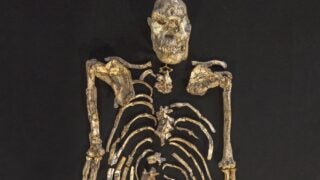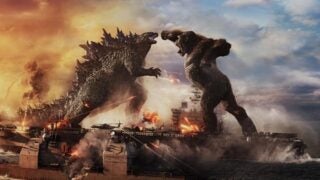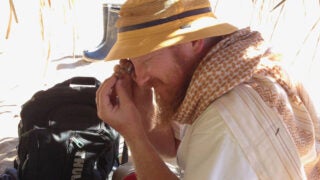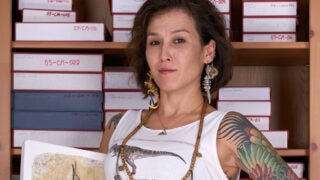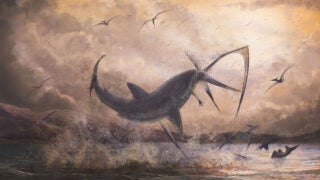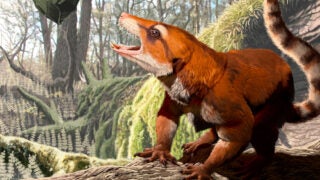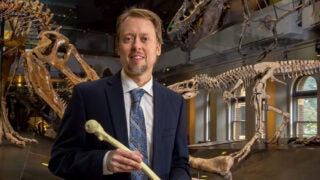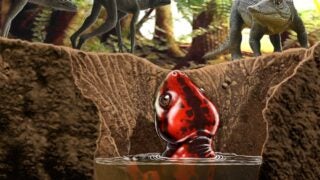USC Dornsife paleontology doctoral student Hank Woolley is digging into our warmer past to help us understand how we might survive climate change.
Paleontology
News Listing
The USC-led study examined the shoulder assembly of Little Foot, an Australopithecus that lived more than 3 million years ago, and may have confirmed how our human ancestors used their arms.
In the epic battle between the giant reptile and the giant primate, each would have relative biological advantages and disadvantages.
The discovery by USC researchers helps date the more than 900-mile migration to about 34 million years ago.
After earning her PhD in Earth sciences from USC Dornsife, Jingmai O’Connor has carved out an award-winning career as a paleontologist in China.
The creature is similar to the largest pterosaurs known. Key characteristics were gleaned from a cache of bones unearthed in Canada.
USC researchers, studying bones at the L.A. County Natural History Museum, find evidence of a fearsome shark taking to the sky to take down a pterosaur, a formidable flying reptile.
The ancient find, unearthed in Utah, bridges the transition from reptiles to the beginning of mammals and changes our view of continental drift, too.
An anatomical sciences expert looks back at the arm and leg bones of ancestors to gain insight on how they interacted with their environment.
The discovery fills a significant gap in the evolutionary history of frogs, toads and other amphibians.


